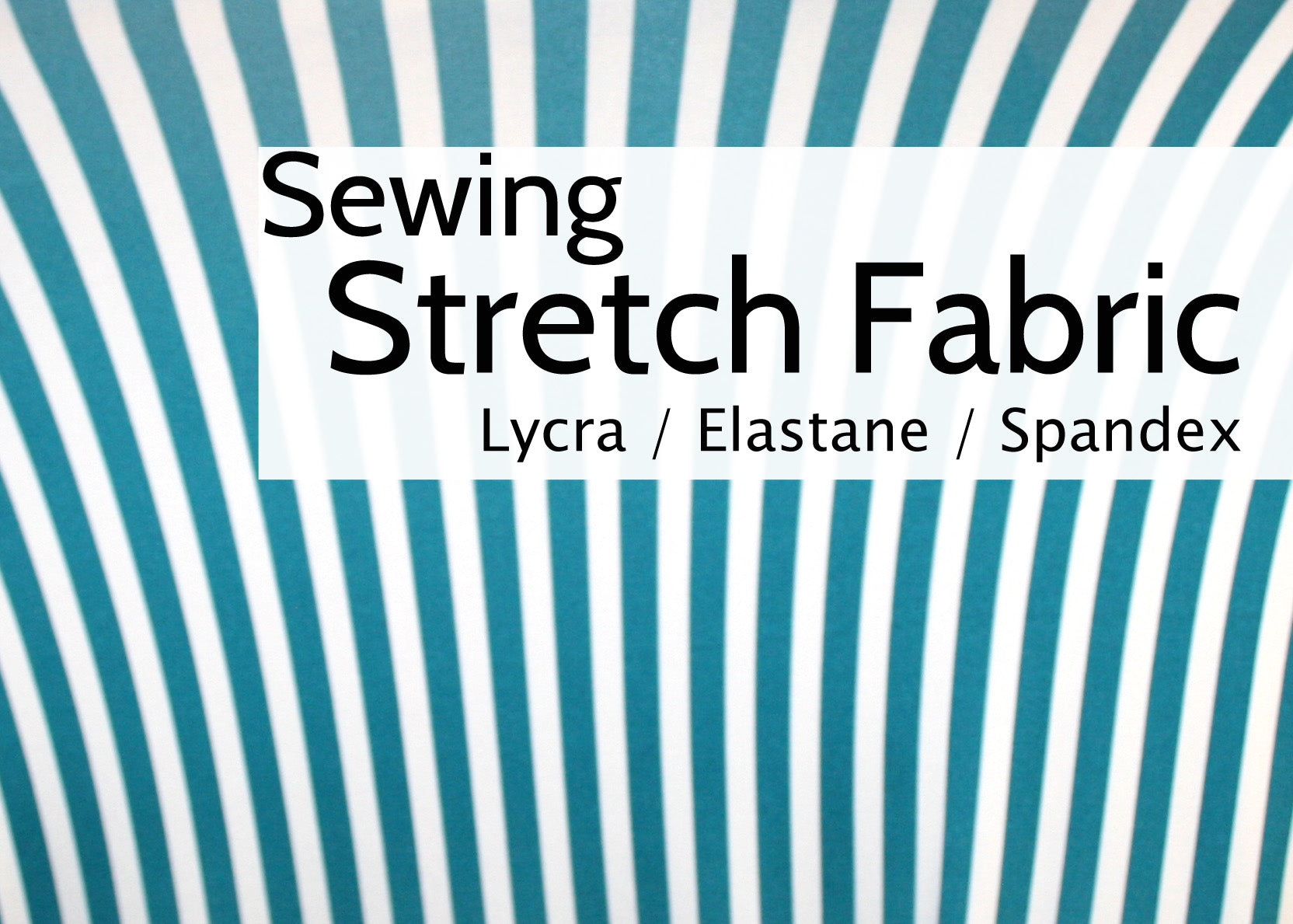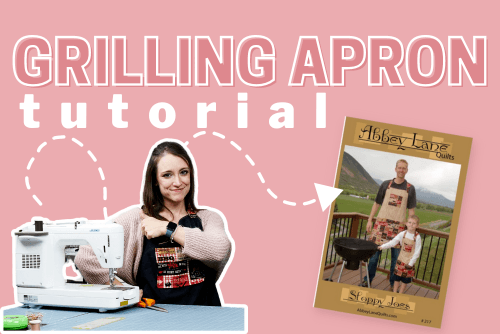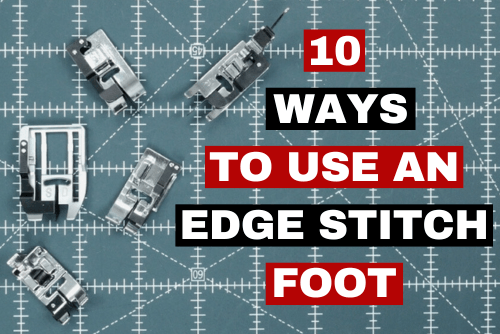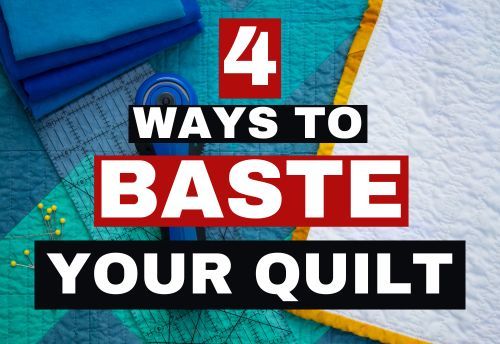Three different names all meaning basically the same thing: super stretchy fabric mostly for tight fitting garments, such as in sports wear or under garments. However, you can use it for anytime you need some serious stretch and hold. Lycra is simply the "brand" name for spandex made by DuPont Textiles. In the United States, we commonly call it Spandex, but worldwide it's more commonly referred to as Elastane.
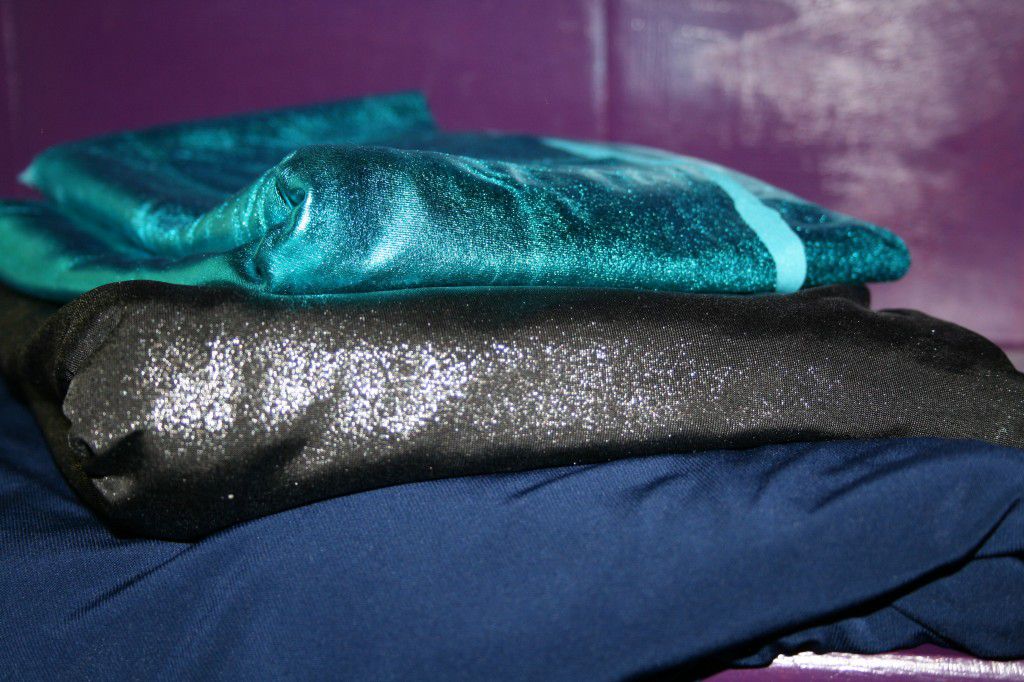
So why do we love spandex so much? It has a man made stretching and wrinkle resistance features not found in natural fibers. And, unless directly noted, it's machine washable. With the popularity of spandex growing, Lycra has expanded into fashion sewing and has made such blends as silk and wool. Definitely pretty awesome. However, the fear of this fabric may stop many of us from sewing it. Let's go over some helpful tips to get the job done easier.
First off, prepare yourself for success with the right tools.
Here are the tools you need:
Stretch Needle
Very Sharp Scissors or Rotary Cutter - any dullness will snag and stretch the fabric.
Twin Needle for Topstitching.
Polyester Thread or Nylon Thread for sergers
Super Sharp Pins
Walking Foot - very helpful to prevent layers from slipping around, but not necessarily 'required'.
The Prep
We really can't get away from prewashing our fabric. As with most fabrics, spandex should be prewashed unless noted otherwise. Try to remove it from the dryer as soon as the cycle stops to prevent any creases.
Check your fabric for any inconsistencies. If you see any holes, markings, fades, or bubbles, work around them.
Construction:
Whenever possible, use a serger. The seams simply stretch better. In other cases, use a narrow zigzag stitch. If you experience puckering, loosen the needle tension. To get really specific, slowly wind your bobbin to prevent the thread being over stretched.
Topstitching? Switch to a Twin Needle. Topstitching is also a great way to keep those seams laying flat, especially on collars.
According to Threads Magazine, "Areas of stress, like crotch and underarm seams, need a 2.5mm triple stitch ; other seams, such as those at side, inner leg, and casings, take a narrow, .05mm- to 1.5mm-long zigzag". Threads Magazine also recommends manually stretching the seams. If the thread breaks, the tension must be loosened.
For garment construction, make sure the direction of most stretch follows the pattern direction meant to go across the body. Since needle holes are permanent. Any hand basting or tacking needs to be done within the seam allowance. When I want to sew something perfectly, I always hand baste first. Lycra is especially slippery, I would suggest hand basting as a headache preventative.
Invisible zippers and snaps are great closures for lycra. Buttonholes can also be sewn, but you must add cording to the buttonhole for stability.
Interfacing can be used with lycra. Choose a fusible knit interfacing for best results. Also, use interfacing behind any closures and fuse it along the direction of least stretch.
Ironing:
Steaming is possible with Elastane. However, keep the iron in a synthetic setting and use a press cloth. I have also found it helpful to steam the fabric to get out some unsightly wrinkles. Simply hover the iron a inch or two above the fabric and allow to steam to set it.
Isn't stretch fabric awesome? Feel free to download and share our Quick Reference Card!

Most importantly, don't be discouraged if you mess up. Sewing lycra is a whole new technique and takes practice!
Happy Sewing!
If you know of a good tip or trick not mentioned, please share it with the community in the comment section below.


